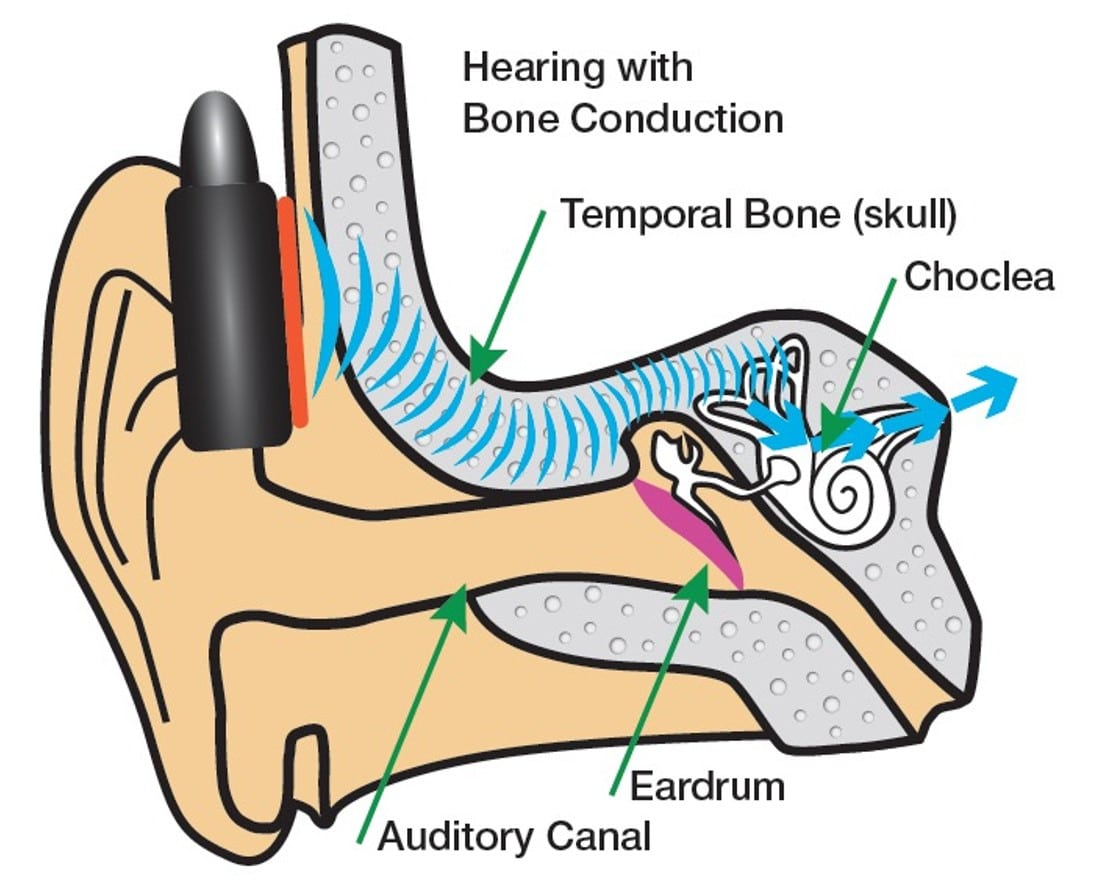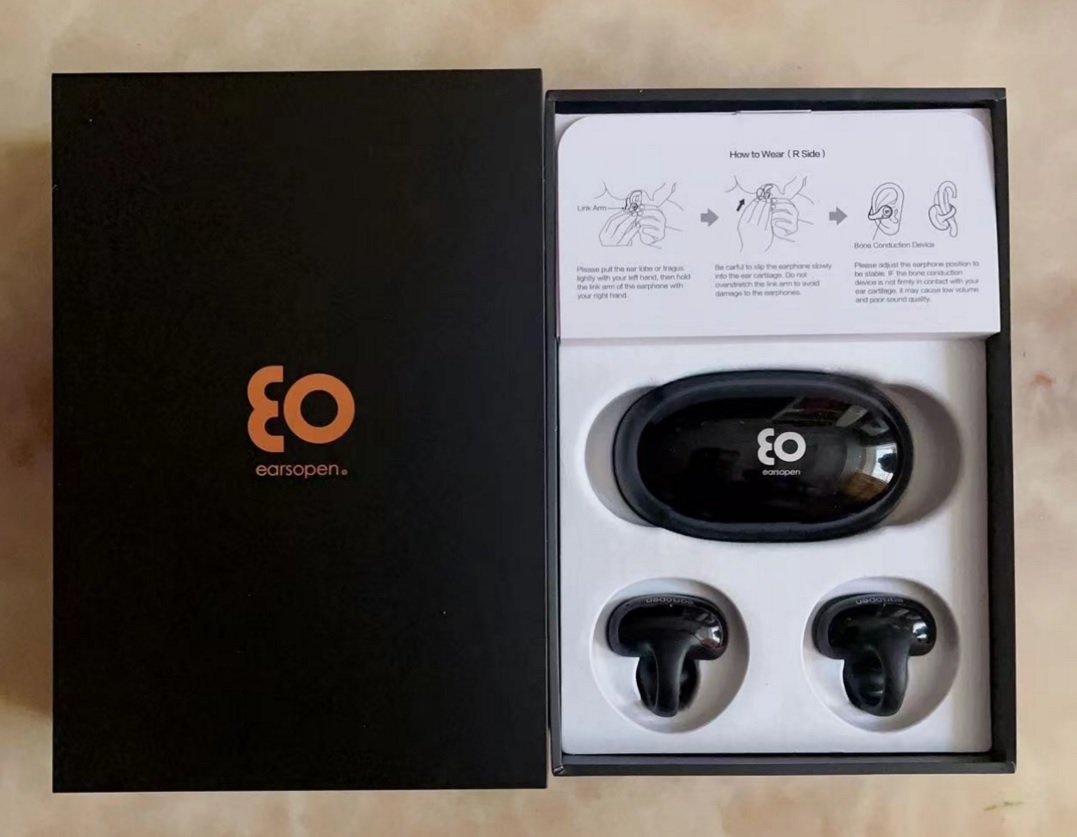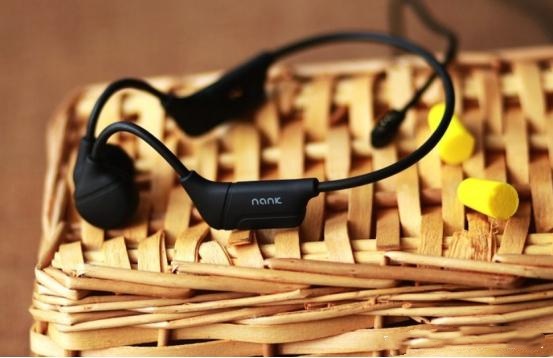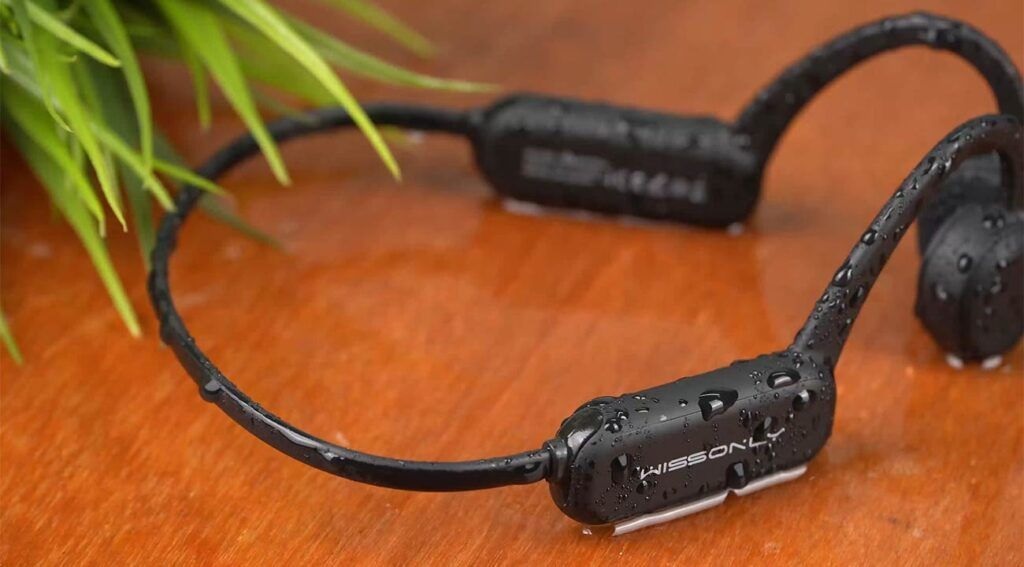What Are Bone Conduction Headphones and Are They Safer?
Jan 07,2023 | Sylvia
In recent years, you may find that more and more people around you are wearing a kind of earphone clipped to the edge of the temple. Most of these headphones are bone conduction headphones.
So, what are bone conduction headphones?
They are sound transmission devices that transmits sound through the vibration of the skull so that people can perceive speech.

In physics, sound can be transmitted through solids, air, and liquids as media. Traditional earphones transmit sound through the air, while bone conduction headphones transmit sound through the solid of the skull.
Bone conduction device include conduction speaker and bone conduction microphone:
(1) Bone conduction speakers are used to listen to the sound. It converts the electromagnetic signal into sound waves (also called vibration signals) directly through the bone to the auditory nerve and makes the brain center feel the sound.
(2) The bone conduction microphone is used to collect sound. It uses the slight vibration of the head and neck bones caused by human speech to collect sound signals and convert them into electromagnetic signals.
The work principle of bone conduction headphones
Bone conduction headphones are a kind of headphones that uses bone conduction technology, they are placed close to the bones, and sound waves are directly transmitted to the auditory nerve of brain through bones.

To understand the principle of bone conduction headphones, we must mainly understand the sound transmission method and path. We can first look at the working principle of traditional headphones, and then make a comparison. Then it is clear.
Under normal circumstances, traditional headphones are essentially "air conduction headphones" that use the air in the external ear canal as the main sound transmission medium. In the air conduction process, the micro-horn of the headphones vibrates. Then sound waves are transmitted through the air in the external auditory canal to the eardrum, the ossicle, the labyrinth of inner ear and other parts. The vibration of the internal and external lymphatic fluid in the inner ear helps the spiral organ to complete the perception of sound, and then transmit to the auditory nerve. The auditory nerve produces nerve impulses and presents signals to the auditory center, and the cerebral cortex help us to "hear" the sound after comprehensive analysis.
The biggest unique feature of bone conduction headphones is that sound waves do not pass through the air in the external auditory canal and eardrum, but directly use the human bone as the sound transmission medium. When using, we need to put the sound source of the headphones against the skull behind the ear. And when the sound source vibrates, it will drive the skull to vibrate together, so that the sound wave is transmitted into the skull. And then the sound wave is directly transmitted to the ossicles through the skull bypassing the external auditory canal and the ossicles. And then the ossicles transmit sound waves into the bone labyrinth, so that the sound information is transmitted to the cochlea and auditory nerve etc..
Are bone conduction headphones safer?
Just to get straight to my point, bone conduction headphones are safer and healthier than regular headphones, they are the healthiest kind of headphones. There are several reasons.They cause less hearing damage, less damage to cranial nerves and auditory nerves than traditional headphones, and are safer during wearing.
Bone conduction headphones are safer 1: it is less harmful to hearing
First of all, because hearing damage generally occurs in the eardrum and inner ear, bone conduction headphones rely on human bones to transmit sound, and they do not need to pass through the ear canal and tympanic membrane, so damage to the tympanic membrane can be avoided. Compared with conventional headphones, the vibration waves of bone conduction headphones are also relatively moderate, which will have less impact on auditory hair cells, so they are the headphones that cause the least damage to the ears.
Bone conduction headphones are safer 2: it does less damage to the auditory nerve
Next, let me talk about the problem of electromagnetic waves. Most electronic products have problems with electromagnetic waves, but the strength of electromagnetic waves varies. The electromagnetic waves of traditional headphones are relatively stronger, and it is easier to cause damage to the human brain and hearing nerves. The electromagnetic waves of bone conduction headphones are extremely weak, they have the same intensity as the electromagnetic waves existing in nature, and will not cause damage to the human brain and hearing nerves.
Bone conduction headphones are safer 3: pay attention to environmental sound to protect your safety
The way bone conduction headphones are worn can also help the wearer avoid the dangers of wearing them. They don't need to be plugged into the ear canal when you wear them, and you can still keep an eye on the surrounding environment while listening to music with them. For example, if you wear bone conduction headphones when crossing the road, you will not be in danger because you cannot hear the sound of the horn; when you are exercising outdoors, you can also hear the sound behind you by wearing them to avoid some dangerous situations.
In addition to safety, bone conduction headphones have many advantages, such as comfortable to wear, clean and hygienic, high waterproof level and so on.
Of course, there are two small disadvantages of bone conduction headphones, that is, the sound quality is not perfect, and there is a slight sound leakage problem. However, with the advancement of technology, these two problems have been greatly improved. The better bone conduction headphones do a good job in improving sound quality and preventing sound leakage.
Next, I will recommend several bone conduction headphones. Among them, wissonly and aftershokz have good performance in terms of sound quality and sound leakage reduction,by the way, wissonly has better product parameters and higher cost performance.
1. Wisonly Hirunner bone conduction headphones
Recommended reason:
Wissonly bone conduction headphones is the first brand I came into contact with. I first found it on the crowdfunding website. Later, I bought it after seeing many people's recommendations in some online running forums. After my long-term comparative test, the overall function of this Hi Runner model product is very powerful, which greatly exceeds my expectations.
Their team is one of the best talents in the field of bone conduction. The product director was once the core engineer of a first-line brand, and has accumulated 10 years' experience in the field of bone conduction technology. Wissonly Hi Runner increases the vibration area of the sound source vibrator by 35% through excellent structural design, which makes the music feel more spatial and immersive. It is also excellent in sound leakage reduction. The fully wrapped design reduces the vibration of the shell, and the structural optimization makes the sound leakage wave be offset, thus avoiding 90% sound leakage, which is much better than the bone conduction headphones of the same price on the market.
The fully-enclosed design of Wissonly Hirunner bone conduction headphones makes its waterproof grade to IPX8, which means that you can wear it for bathing, swimming and even diving within 20 meters. Even better, the Hi Runner headphones has a built-in storage of 32GB, which can store 5,000 songs. It can still be used without the mobile phone. It supports both MP3 mode and Bluetooth mode. It is equipped with Bluetooth 5.0 chip, which makes it superior to most bone conduction headphones in transmission distance, connection stability and power consumption.
2. Philips A6606 bone conduction headphones

Recommended reason:
The headphones have a compact structure that is completely ergonomically designed.
They are stable to wear, and cannot be shaken off in rough sport, which helps you to do movements without restraint during exercise. They are open headphones that do not need to be plugged into the ear. This keeps the ear canal fresh, healthy and comfortable.
They support IP67 waterproof grade, daily sweating is no problem. But after all, they are not professional-grade waterproof, can not be used in swimming.
3.AfterShokz OpenSwim bone conduction headphones

Recommended reason:
This OpenSwim bone conduction headphones, the whole body is made of titanium alloy, which is tough, durable, and can be firmly worn to fit the ears. The whole body has an integrated design, no opening design, and the waterproof performance of the body reaches IP68 grade, so it is suitable for swimming. Its sound source part adopts a long strip structure design, so that the loudspeaker has a larger surface area and higher sound transmission efficiency. With its own 4G memory, it can store thousands of songs, and its battery life can last up to 8 hours, which can meet the daily exercise demand. However, this headphone does not support Bluetooth and calling functions.
4.earsopen SS900 bone conduction headphones

Recommended reason:
It adopts the 5.2 Bluetooth protocol, which can start automatic connection when the charging compartment cover is opened. It is low latency during use, and the anti-interference ability is also strengthened. In terms of sound quality, BoCo's miniature bone conduction vibrator is adopted, which has good performance at low frequencies, but which has harsh noise and serious sound leakage at high frequencies. The 8G single-earphone body is basically comfortable during the whole wearing process.
5.Nank Runner CC3 bone conduction headphones

Recommended reason:
Runner CC2 is made of titanium alloy, with a body weight of 28g, and the overall wearing experience is good. The sound quality and sound leakage are better than their previous products, but they still need to be improved. The headphones also support high-definition call noise reduction, which is a plus.
The ability of this headphone is relatively average, and there are no special highlights or obvious shortcomings. As an entry-level bone conduction headphone, it is still qualified.



